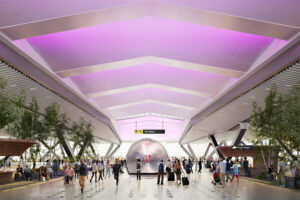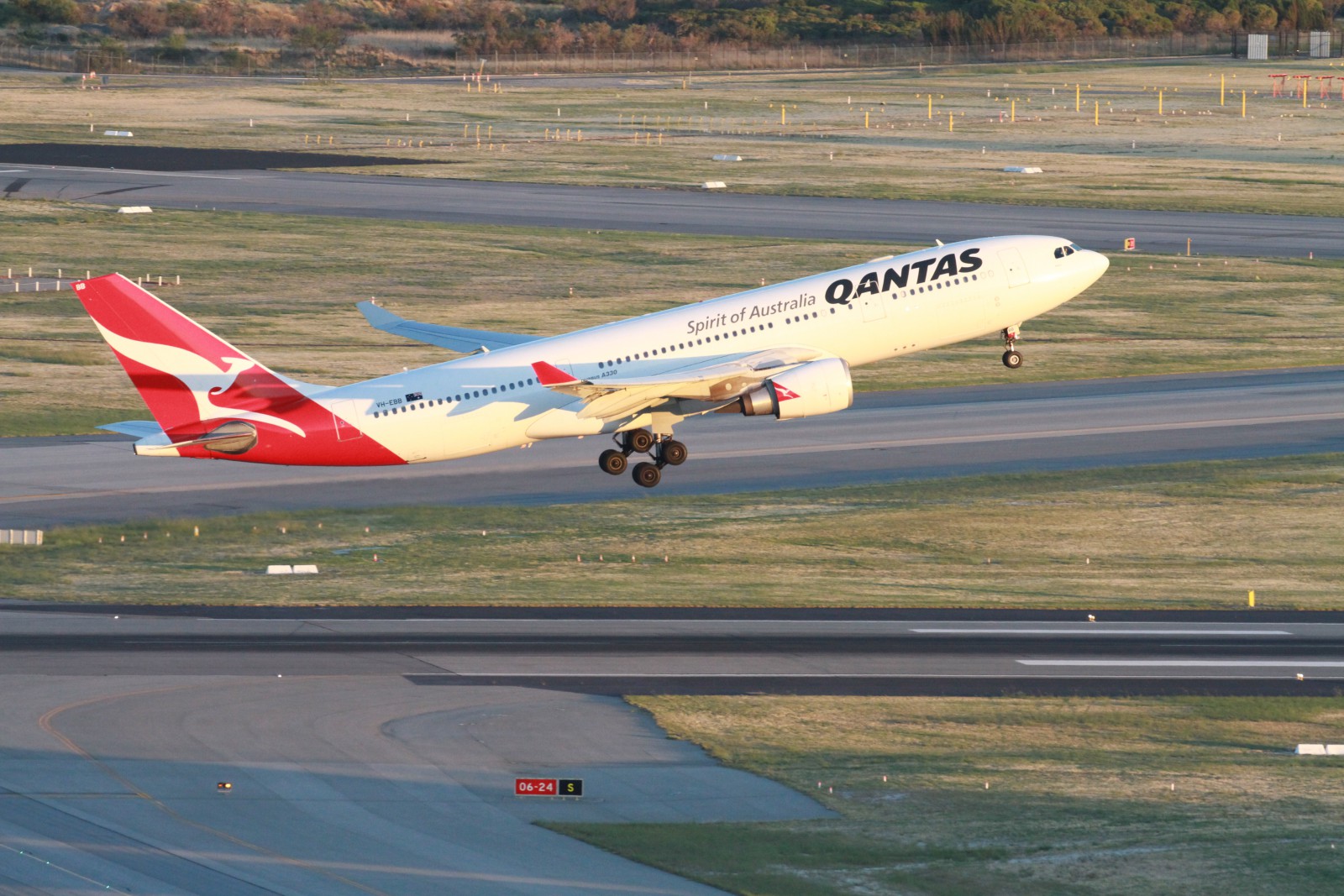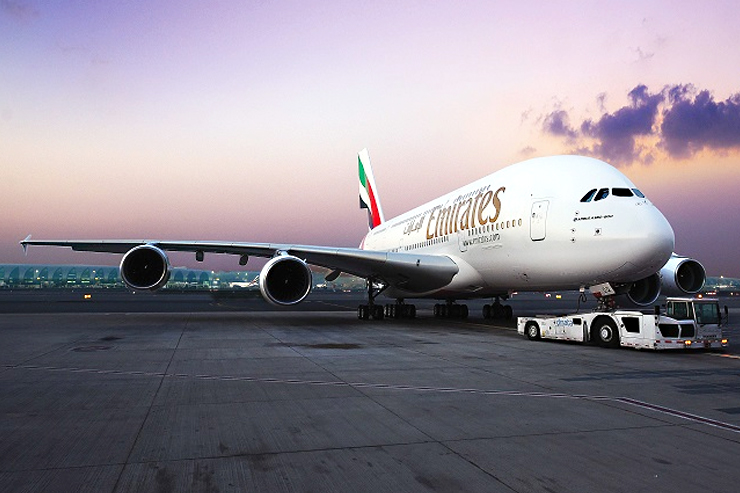A Bright Future for JFK Airport: New Terminal One Takes Off

Few U.S. cities are in more desperate need of airport renovations than New York. The city’s three primary airports, JFK, Newark, and LaGuardia, have terminal facilities that have fallen behind the times and have become congested, posing a significant challenge for travelers. Fortunately, the authorities have recognized this issue and are embarking on a significant transformation to bring these airports back to world-class standards. Recently, JFK Airport hit a major milestone in this endeavor, with the groundbreaking ceremony for the New Terminal One (NTO).
The New Terminal One project is a collaborative effort involving airlines, funding partners, project management companies, and other stakeholders. This new terminal will encompass the existing Terminal One, which is primarily used by international airlines, Delta’s Terminal Two, and the footprint of the now-demolished Terminal Three. This development is part of a broader effort to revamp JFK Airport and enhance the traveler experience.
Anchor Airlines and Alliances
The press release for the New Terminal One project lists Air France/KLM, LOT Polish Airlines, and Etihad Airways as anchor airlines for the new terminal. It’s interesting to note that despite the major redevelopment efforts at JFK, it seems that alliance partners will continue to operate from different terminals. Air France/KLM’s primary U.S. partner is Delta, which operates out of terminal four, Etihad has codeshare partners scattered across various terminals, and LOT is part of the Star Alliance. Therefore, the NTO may function similarly to the current terminal one, hosting a diverse mix of airlines.

Design and Features of the New Terminal
The design of the New Terminal One is promising. It will consist of a large headhouse and two piers with a total of 23 gates, most of which will likely be designed to accommodate long-haul aircraft. Based on the renderings, the terminal appears to be spacious, and modern and reflects the vibrancy of New York City, ensuring travelers know they have arrived in the Big Apple.
The project is set to break ground this summer, with the first phase expected to open in 2026 and the entire project scheduled for completion in 2030. While this means travelers will have to wait a while to experience the New Terminal One for themselves, it also indicates there will likely be construction-related inconveniences for passengers using Terminals One and Two in the interim.
A Bright Future for JFK
The redevelopment of JFK Airport is undoubtedly an exciting prospect for travelers. It not only addresses the pressing need for improved facilities but also aligns with the broader vision for New York City as a premier global destination. As the New Terminal One project unfolds and progresses, it promises a more seamless and enjoyable experience for travelers passing through JFK, a key gateway to the United States. The stunning renderings of the final terminal design, including a globe and route map outside the terminal, hint at the potential for innovative features to enhance the passenger experience.
Here’s hoping the globe serves as an interactive screen that can automatically update with new routes, sparing the maintenance crew the trouble of adjusting the string lights each time a new destination is added to the network. With this project, JFK Airport is set to reclaim its position as a world-class travel hub, and travelers can look forward to a bright future when passing through its terminals.
Enhancing Traveler Experience
One of the most significant advantages of the New Terminal One project is the enhancement of the traveler experience. New York City, as one of the world’s most iconic and visited destinations, deserves an airport that mirrors its prestige. JFK Airport has long been a key entry point for international travelers, and the new terminal promises to make a lasting first impression.
The spacious and modern design of the terminal is aimed at providing travelers with a comfortable and visually pleasing environment. Travelers can expect improved amenities, including a wide range of dining options, duty-free shopping, and entertainment choices. The larger gate capacity, with most gates accommodating long-haul aircraft, will reduce congestion and improve overall efficiency, ensuring smoother departures and arrivals.
The revitalized JFK will cater not only to the seasoned business traveler but also to families and leisure travelers. In addition to passenger conveniences, there will be a focus on sustainability and energy efficiency, which aligns with broader global efforts to reduce the environmental footprint of air travel. The New Terminal One aims to be more eco-friendly, utilizing the latest in green building technologies and practices.
Economic Impact
The redevelopment of JFK Airport is not just about improving the travel experience; it also has significant economic implications. New York City relies heavily on tourism and business travel, and having a world-class airport is essential to maintaining its status as a global hub for commerce and leisure.
The New Terminal One project is expected to generate thousands of jobs during the construction phase and provide additional employment opportunities upon completion. A state-of-the-art airport not only enhances the city’s image but also encourages more international visitors, boosting the local economy. Improved facilities and an efficient, welcoming terminal will lead to increased passenger traffic, supporting the growth of airlines and related services.
Infrastructure Resilience
In a time when the world is facing increasing climate-related challenges, the redevelopment of JFK Airport takes into account the importance of infrastructure resilience. New York has experienced its share of extreme weather events, and the new terminal is being designed with these challenges in mind.
The modern infrastructure will be built to withstand potential climate-related impacts. This includes improved flood protection measures, resilient construction materials, and advanced weather monitoring systems. These efforts are crucial to ensuring that JFK remains operational during adverse weather conditions, safeguarding the transportation network, and preventing disruptions to air travel.
Global Connectivity
New York City is a global crossroads, attracting visitors and businesses from all corners of the world. The redevelopment of JFK Airport not only benefits local travelers but also improves global connectivity. The airport serves as a key gateway to the United States, making it easier for international travelers to access the city and connect to destinations throughout the country.
With the inclusion of anchor airlines like Air France/KLM, LOT Polish Airlines, and Etihad Airways, JFK will continue to be a vital link in the global aviation network. This interconnectedness fosters economic, cultural, and diplomatic ties, benefiting not only New York but the entire United States.
The New Terminal One project at JFK Airport represents a pivotal moment in the efforts to upgrade New York’s airports. It promises to provide travelers with a modern, efficient, and welcoming terminal that befits the city’s status as a global destination. The project’s scope, including the involvement of anchor airlines and a focus on traveler amenities, demonstrates a commitment to enhancing the passenger experience.
Beyond the aesthetic and convenience improvements, the redevelopment of JFK also carries significant economic and infrastructure resilience benefits. It supports local employment and economic growth, while also ensuring that the airport can withstand the challenges posed by climate-related events.
As New York City continues to evolve as a premier global hub, the revitalized JFK Airport will play a crucial role in connecting the world to the city and furthering economic, cultural, and diplomatic ties. With the New Terminal One project taking flight, the future of JFK Airport is indeed bright, promising travelers a world-class experience and cementing its status as a premier gateway to the United States.





